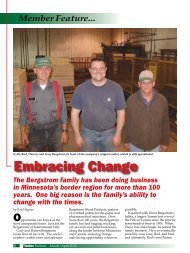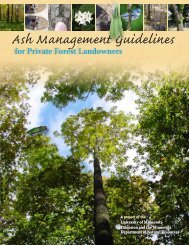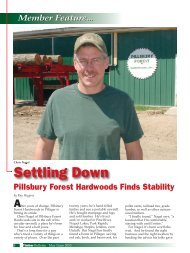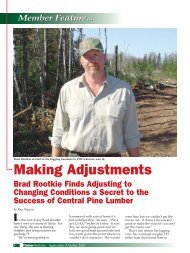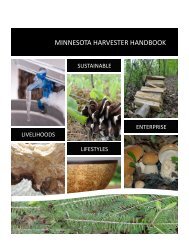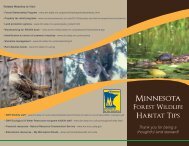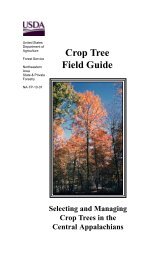Ash Management Guide for Private Forest Landowners
Ash Management Guide for Private Forest Landowners
Ash Management Guide for Private Forest Landowners
You also want an ePaper? Increase the reach of your titles
YUMPU automatically turns print PDFs into web optimized ePapers that Google loves.
Chapter 5The Native PlantCommunitiesFire-dependentSystem<strong>Ash</strong> in theFire-dependent SystemGLOSSARYhydrophobic: Having little orno affinity <strong>for</strong> water molecules.The range(red) of firedependent<strong>for</strong>ests in Minnesotaand thosethat includeash (blackdots).Many <strong>for</strong>est types, like jack pinesavanna are fire-dependent. The onlyway to maintain these types on thelandscape is by reintroducing fire.Fire-dependent <strong>for</strong>est and woodlandcommunities (FD), as the name implies,are strongly influenced and shaped bywildfires. Fire is important because it isthe main source of mortality that selectsamong the species and causes the <strong>for</strong>est toregenerate. Fire is the principal means ofreleasing nutrients and reducing carbonstores. It does this in a way that is episodicand unpredictable when compared to systemsthat are adapted to annual cycles ofnutrient availability. Fire creates situationswhere nutrients are lost rather permanentlyfrom sites by leaching them belowthe rooting zone and by lateral transportto wetlands, lakes, or streams.FD communities occur on sites thatcannot retain very many nutrients ormuch water, and fires contribute furtherto this by producing hydrophobic (waterrepelling)compounds that end up in thesoil. The plants that live in these communitiesare obviously able to survive firesRed pine stand with ashin understory.Photo: Julie Miedtke50



